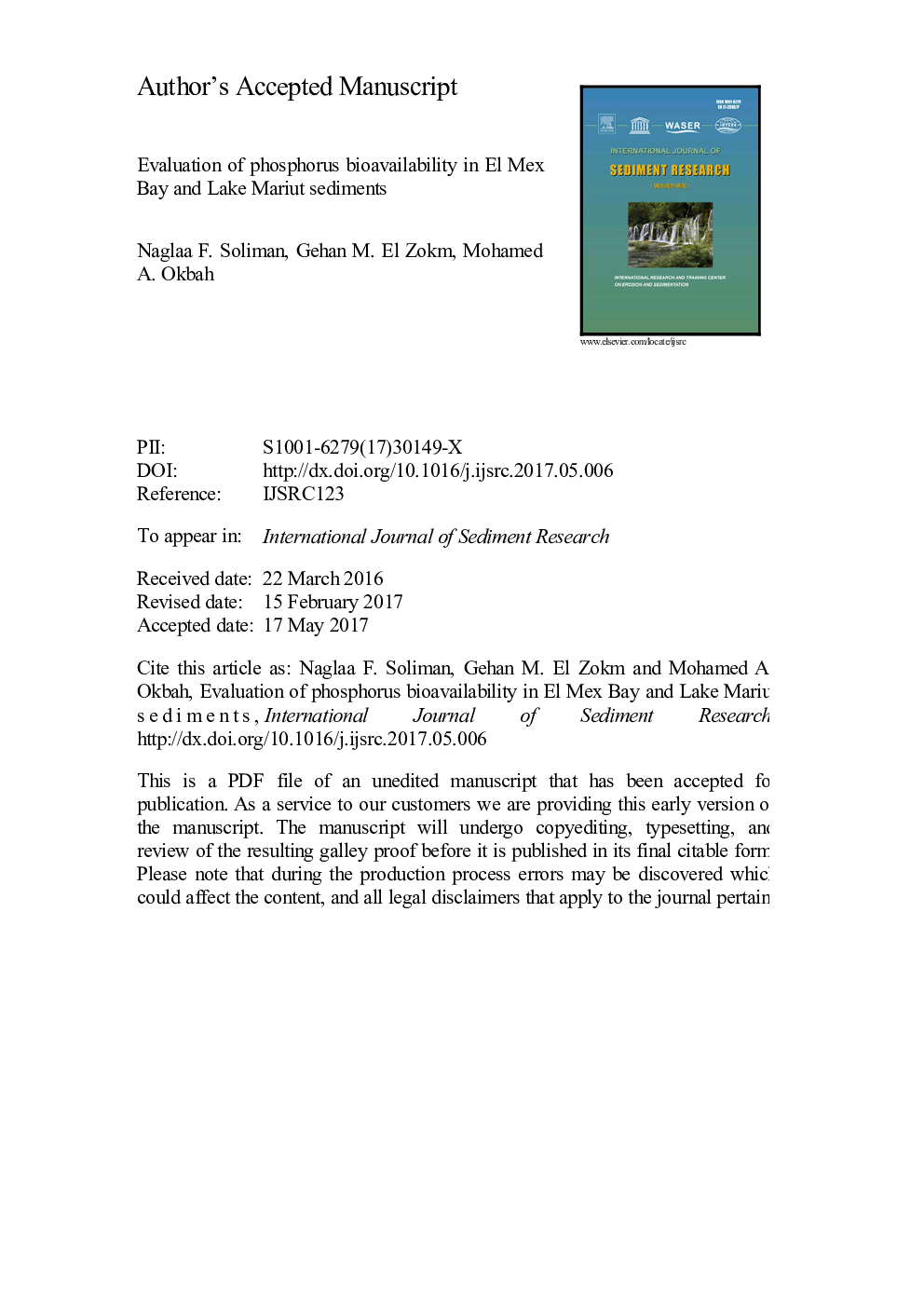| Article ID | Journal | Published Year | Pages | File Type |
|---|---|---|---|---|
| 8911164 | International Journal of Sediment Research | 2017 | 30 Pages |
Abstract
Phosphorus (P) fractions and their bioavailability in the sediments from El Mex Bay and Lake Mariut in Egypt were investigated using different chemical extraction methods. Sodium bicarbonate (NaHCO3) extractable P (Olsen-P) was the largest fraction (14.42%), followed by algal available P (AAP) (3.56%), water soluble P (WSP) (0.79%), and readily desorbable P (RDP) (0.06%) for El Mex Bay. While AAP contributed 9.94% to total P in sediments from Lake Mariut, Olsen-P 8.53%, WSP 4.11%, and RDP 0.92%. Summation of the bioavailable P fractions didn't exceed the sediment quality guidelines, and, therefore, P doesn't represent a danger to marine organisms. Correlation coefficients showed that no apparent relations between total P (TP) and iron (Fe), aluminum (Al), and calcium (Ca) in the sediments. Furthermore, Fe:P ratio was less than 15 indicting that there was not enough Fe in surface sediments to bind to P at most of the sampling sites. The positive correlation between TP and organic matter (OM) for Lake Mariut and El Mex Bay sediments indicated that the organic matter content of the sediment was a useful predictor of the total phosphorus content. Data from this study constitute a baseline of phosphorus bioavailability in sediments from El Mex Bay and Lake Mariut and could be used as a reference for future studies on the changes of bioavailable and residual phosphorus fractions over time.
Keywords
Related Topics
Physical Sciences and Engineering
Earth and Planetary Sciences
Geochemistry and Petrology
Authors
Naglaa F. Soliman, Gehan M. El Zokm, Mohamed A. Okbah,
